#WasteMaterial
Text
Revolutionizing Environmental Conservation: The Wastematerial

At the heart of Wastematerial’s mission lies a commitment to sustainability and environmental stewardship. The E Waste Recycling Plant stands as a testament to this dedication, offering a comprehensive solution to the burgeoning e-waste crisis. Through cutting-edge technology and advanced processes, Wastematerial transforms discarded electronics into valuable resources, minimizing the environmental impact and promoting a circular economy.
One of the key features of the Wastematerial E Waste Recycling Plant is its holistic approach to e-waste management. Unlike traditional methods that often involve crude dismantling and incineration, Wastematerial employs a sophisticated system of sorting, disassembly, and material recovery. By utilizing automated machinery and specialized techniques, the plant ensures maximum efficiency and resource optimization, extracting valuable metals, plastics, and other materials from electronic devices.
Furthermore, Wastematerial prioritizes environmental responsibility throughout every stage of the recycling process. Stringent quality control measures are implemented to mitigate potential hazards and ensure compliance with regulatory standards. Hazardous components such as batteries and mercury-containing devices are safely extracted and processed, preventing them from polluting the environment or posing risks to human health.
In addition to its environmental benefits, the Wastematerial E Waste Recycling Plant also contributes to the creation of a green economy. By recovering valuable materials from e-waste, the plant generates new opportunities for sustainable manufacturing and resource conservation. Recycled metals, plastics, and rare earth elements can be reintroduced into the production cycle, reducing the reliance on finite natural resources and minimizing the carbon footprint of electronic products.
Moreover, Wastematerial fosters collaboration with local communities, governments, and businesses to promote awareness and participation in e-waste recycling initiatives. Educational programs, outreach campaigns, and public partnerships are established to empower individuals and organizations to make informed choices regarding e-waste disposal. By raising awareness about the importance of responsible recycling, Wastematerial strives to create a culture of environmental consciousness and accountability.
As a pioneering leader in e-waste recycling, Wastematerial sets a precedent for sustainable innovation and corporate responsibility. The E Waste Recycling Plant not only addresses the immediate challenges posed by e-waste but also paves the way for a greener, more sustainable future. Through its unwavering commitment to environmental conservation and community engagement, Wastematerial continues to inspire positive change and redefine the way we think about waste management.
In conclusion, the Wastematerial E Waste Recycling Plant represents a paradigm shift in the approach to e-waste management. By harnessing the power of technology and innovation, Wastematerial demonstrates that environmental sustainability and economic prosperity can go hand in hand. As we strive towards a more sustainable future, Wastematerial serves as a beacon of hope, illuminating the path towards a cleaner, greener world for generations to come.
#Wastematerial#EwasteRecycling#SustainableTech#GreenInnovation#CircularEconomy#EnvironmentalStewardship#RecycleResponsibly#GreenTechRevolution#ReduceReuseRecycle#EwasteSolution
1 note
·
View note
Text
Revolutionizing E-Waste Management in India: Spotlight on WasteMaterial
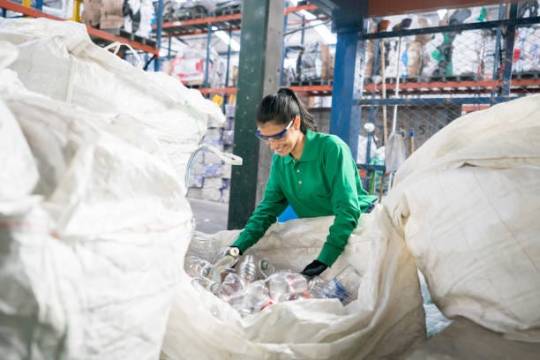
Understanding the E-Waste Conundrum in India
India stands at the cusp of a digital revolution, with a burgeoning consumer base embracing the latest gadgets and gizmos. However, this surge in technology adoption comes with a hidden cost — the generation of vast quantities of electronic waste. According to recent studies, India generates approximately 2 million tons of E-Waste Management companies in India annually, a figure expected to escalate rapidly in the coming years.
The disposal of e-waste poses a myriad of challenges, ranging from environmental pollution to public health hazards. Improper handling of electronic waste releases toxic substances such as lead, mercury, and cadmium into the soil and water bodies, contaminating the environment and endangering human health. Moreover, the rampant practice of informal recycling in unregulated scrapyards exacerbates these issues, exposing vulnerable communities to hazardous working conditions and health risks.
Enter WasteMaterial: Pioneering Sustainable Solutions
Amidst this grim scenario, WasteMaterial emerges as a trailblazer in the realm of E-Waste Management companies in India. Founded with a vision to create a sustainable future, WasteMaterial employs innovative technologies and best practices to tackle the e-waste epidemic head-on.
At the heart of WasteMaterial operations lies a commitment to responsible recycling. Unlike conventional methods that often prioritize profit over sustainability, WasteMaterial adopts a holistic approach that prioritizes environmental stewardship and social responsibility. Through a network of state-of-the-art recycling facilities, WasteMaterial ensures that end-of-life electronics are dismantled, processed, and recycled in an eco-friendly manner, minimizing harm to the environment and human health.
Key Initiatives and Impact
WasteMaterial’s impact extends far beyond the realms of environmental conservation. By championing the cause of E-Waste Management companies in India, the company catalyzes socio-economic development and empowers local communities.
One of WasteMaterial’s flagship initiatives is its focus on creating awareness and driving behavioral change. Through outreach programs and educational campaigns, WasteMaterial educates consumers and businesses about the importance of responsible e-waste disposal and the benefits of recycling. By fostering a culture of environmental consciousness, WasteMaterial strives to instill lasting change and pave the way for a sustainable future.
Furthermore, WasteMaterial is committed to fostering inclusive growth by providing livelihood opportunities to marginalized communities. Through its recycling facilities, the company creates jobs and empowers informal waste workers, offering them formal employment, training, and access to social benefits. By integrating inclusivity into its business model, WasteMaterial not only mitigates the adverse effects of e-waste but also contributes to poverty alleviation and social equity.
Looking Ahead: Towards a Greener Tomorrow
As India stands at a crossroads in its journey towards sustainable development, WasteMaterial serves as a beacon of hope, illuminating the path towards a greener, cleaner future. By leveraging technology, innovation, and a steadfast commitment to environmental stewardship, WasteMaterial redefines the landscape of E-Waste Management companies in India.
As we navigate the complexities of the 21st century, WasteMaterial reminds us that sustainability is not merely a choice but a collective responsibility. By joining hands with visionary organizations like WasteMaterial, we can pave the way for a future where prosperity is synonymous with environmental preservation, and progress is measured not only in economic terms but also in terms of social and environmental impact. Together, let us embark on this journey towards a brighter tomorrow, where waste is no longer a burden but a valuable resource, and where every action we take today shapes the world we leave for future generations.
#EWasteManagement#WasteMaterial#SustainableTech#GreenIndia#RecycleResponsibly#TechRecycling#EnvironmentalStewardship#SustainableDevelopment#EcoFriendly#GreenLiving
0 notes
Text
How to Make a Robot at Home with Waste Materials?

Introduction
Are you interested in building your own robot but don't have access to expensive materials or equipment? Look no further! In this blog post, we will show you how to make a robot at home with waste materials? Not only is this a fun and creative project, but it also promotes sustainability by repurposing items that would otherwise end up in landfills. Get ready to bring your very own robot to life with just a few simple steps. Let's get started!
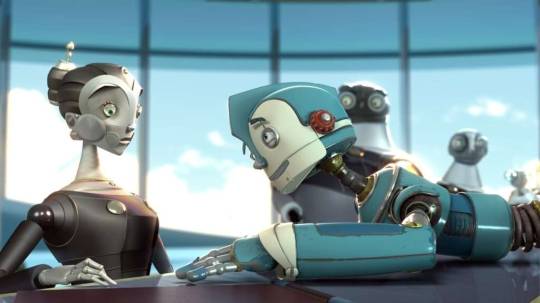
Understanding The Basics of Robotics
Before we dive into the nuts and bolts of creating your homemade robot, let's take a moment to familiarize ourselves with the fundamentals of robotics. Imagine a robot as an autonomous machine, capable of performing a series of complex tasks all on its own. Isn't that exciting?
At its simplest, a robot comprises a body, a battery that acts as its heart, and a motor that functions as the legs, facilitating movement. Now, advanced robots come with a slew of other components, such as sensors for object detection, but we're going to keep things simple for this DIY project. Our robot will be basic, without sensors. It'll be an elementary yet enjoyable introduction to the world of robotics.
So, keep this basic anatomy in mind: a body made from waste materials, a motor for movement, and a battery for power. With these core components, we are ready to embark on our robot-making journey. Let's continue to the next step, shall we?

Identifying and Collecting Waste Materials
The journey to building your homemade robot starts with a fun treasure hunt around your home. Your mission? To scout out potential waste materials that can be transformed into your robot's body. From the forgotten cardboard box tucked away in your storeroom to the empty plastic containers in your recycling bin, these everyday items are about to get a new lease of life. Even discarded bottle caps can play a role in your creation, acting as wheels or decorative features.
The beauty of this project is that you're not just crafting something new, you're also reducing waste by repurposing items you'd usually discard. Your robot could sport a body made from an old detergent bottle, arms crafted from toilet paper rolls, and legs from discarded plastic forks - the possibilities are as boundless as your creativity!
But the body isn't the only component your robot needs. Remember our chat about the basic anatomy of a robot? The motor and battery are key to breathing life into your creation. While a motor can be salvaged from an old toy car that's lost its appeal, a simple 9V battery should fit the bill as the powerhouse. If you don't have a spare motor lying around, don't fret! A quick visit to a local hobby shop should solve that issue.
So, equipped with your list of materials and a sense of adventure, start your scavenger hunt. As you collect each item, you'll feel a step closer to the thrill of bringing your robot to life. Ready, set, collect!
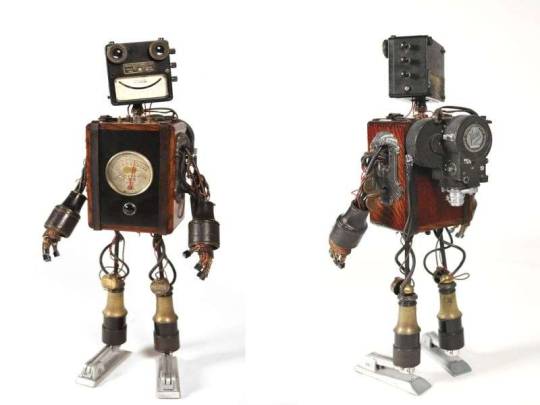
Designing Your Robot Blueprint
As you embark on this exciting DIY adventure, having a roadmap is crucial, and that's where your robot's blueprint comes in. This is where you get to truly tap into your creativity and engineering acumen to design your very own robotic buddy.
Take your time to sketch a simple yet detailed diagram of your robot. Don't worry, you don't need to be a Picasso here. A basic pencil drawing will do the trick. Your goal here is to outline how you want your robot to look and identify where each repurposed item will fit into the grand scheme.
Are those bottle caps going to be the eyes? Is the detergent bottle your robot's torso? How about those toilet paper rolls, are they the arms or the legs? The key here is to visualize your final product and map it out on paper.
Importantly, don't forget to earmark spaces for the key internal components, the heart and legs of your robot, aka the battery and the motor. These elements will bring your creation to life and should be accurately represented in your blueprint.
Creating this blueprint not only lays the foundation for your robot construction but also gives you a sense of ownership and accomplishment, knowing that the design is entirely yours. Remember, there's no right or wrong design. It's your robot, so let your imagination run wild!
With your blueprint ready, you're all set to embark on the next exciting phase - assembling your robot's body.

Assembling the Robot's Body
The anticipation is palpable as you're about to transform your design into reality. Starting with your repurposed materials, meticulously cut them down to the desired sizes as outlined in your blueprint. Whether it's reshaping an old detergent bottle or trimming down toilet paper rolls, remember that precision is key. This is your robot's anatomy we're building, after all.
Next up is the assembly process. This stage brings together all the various components of your robot's body - from its head to its toes. Grab a sturdy adhesive, as it's time to give your robot some form and structure. Glue each part carefully, making sure every piece aligns with your blueprint. Is that detergent bottle sitting straight? Are the toilet paper roll arms evenly attached? Take a moment to check and recheck each step.
Throughout this process, it's important to remember one thing: strength is crucial. These glued joints are what's going to keep your robot intact, allowing it to move and function. Use sufficient adhesive and let each part dry properly before moving on to the next. This is not the stage to rush; patience is your friend here.
As you slowly see your robot's body come together, you'll feel a sense of pride. You're not just creating a toy; you're bringing your creative vision to life and learning about the fascinating world of robotics along the way. Remember, each step is a learning experience and a chance to put your engineering skills to the test.
With a firm and sturdy body ready, you've successfully passed a major milestone in your robot-building journey. But hold your excitement, we're not done yet. The next phase is waiting, where we breathe life into your creation by installing the heart and legs - the motor and the battery. Onwards, to the next step!

Installing the Motor and Battery
The stage is set! You have assembled your robot's body and now it's time to put the motor and battery in place, the components that will bring your creation to life. Let's start by mounting the motor. The exact spot depends on your unique design, but generally, you'll want to attach it to the robot's base or where the legs or wheels are set to be. Ensure that the motor is secure and in alignment with your design for smooth movement.
Moving on to the battery, this is what will provide the power for your robot. Connect it to the motor using wires, paying careful attention to the polarity. That means connecting positive to positive and negative to negative. Remember, batteries are sensitive components, so it's crucial to handle them gently and ensure a proper connection.
It's a moment of magic as you see your once pile of waste transform into a moving machine. But before you marvel at your creation, make sure everything is securely in place. Is the motor securely fastened? Is the battery connected correctly? Your due diligence here will pay off when you see your robot spring into action.
This step isn't just about installing the components, it's about breathing life into your robot. So, gear up and get ready for the moment of truth - it's time to put your engineering skills to the ultimate test! Hold onto your excitement though, because there's one more crucial step to go - testing your robot.

Testing Your Robot
With your robot fully assembled, it's now time to step into the testing phase. Let's flip the switch and set your robot in motion. Keep a keen eye on your creation as it begins to move. Is it rolling or walking as you anticipated? If it seems a little off, don't worry - it's a part of the process.
Delve back into your robot and investigate. Revisit your motor placement and double-check your wiring connections. Small adjustments might be needed to perfect your robot's movements. Don't shy away from tweaking your design or repositioning components; it's all part of the adventure!
This stage is about trial and error, and that's where the real learning happens. So, embrace it. Roll up your sleeves, tinker with your robot, and keep testing until you've got your robot moving just the way you want. Remember, every great inventor has had their share of tests and trials, and you're no different.
So, go ahead, flip that switch and let's see what your homemade, waste material robot can do.
Read the full article
0 notes
Text
From Trash to Treasure: Creative Ways to Use Waste Material for Craft
Art and craft is an activity that allows one to express creativity and imagination. It's also a great way for families and friends to spend quality time together while creating something beautiful. While crafting can be fun and exciting, it can also be costly. Visit the following link
0 notes
Text
An art out of waste
She loves drawing so much to the extent that all walls of my house are filled with various colourful cartoons who express the variety of emotions from sad to good and happy to weepy depends on my behavior towards her ruckus. 😍
This is dedicated to her little talent and efforts with a thank you note to her teacher. Thank you all for reading.
“Art out of waste” created by my 5 yrs old darling …

View On WordPress
0 notes
Photo

𝙏𝙝𝙞𝙣𝙠𝙞𝙣𝙜 𝙬𝙝𝙖𝙩 𝙩𝙤 𝙙𝙤 𝙬𝙞𝙩𝙝 𝙖𝙣 𝙤𝙡𝙙 𝙘𝙤𝙤𝙡𝙚𝙧?
If an old cooler is lying at your home and you don’t have an idea about what to do with it? Then, you can recycle it with Scrapbuk. Just give us a call and we will do the rest of the job.
0 notes
Text

Pilonidal Sinus Treatment in Ghaziabad
In the realm of healthcare, innovation is key, especially when it comes to addressing conditions like pilonidal sinus. For the residents of Ghaziabad, finding effective treatment options can be challenging. However, amidst this challenge, a beacon of hope emerges in the form of Wastematerial, a pioneering healthcare company committed to revolutionizing pilonidal sinus treatment in Ghaziabad and beyond.
1 note
·
View note
Text
Increasing Home Builder Profit By Reducing 3 Types Of Construction Waste
Home Builders Adelaide are always looking for ways to increase their profits. One of the biggest areas where they can make improvements is reducing waste during construction. This can be done by reducing material waste, labour waste and time wasted on projects.
Time Wasted
There is a lot of time wasted in the construction industry, especially when it comes to communicating with clients and Home Builders Adelaide. This can lead to unnecessary delays and additional costs for you as a home builder. These are problems that are easily avoided with better planning and communication between your team members. Time is money, so keep this in mind when planning out construction projects!
Material Waste
Material waste is the most common form of construction waste. Material waste can be reduced by buying materials in bulk, using recycled materials and local materials.

Buying in bulk reduces material waste because you won’t have to order as many individual items, which saves time and money. Buying local products also reduces material waste because it makes the supply chain shorter, which means less fuel needed to ship products across the country or world.
Recycling allows for old items to be used again so that they don’t go straight into a landfill at the end of their life cycle.
Labor Waste
The first step of minimising labour waste is to reduce the amount of time spent on unnecessary tasks. This includes following up with clients and other stakeholders, attending meetings that don’t contribute much value, or taking part in activities that are not directly related to your job.
It’s also important to make sure everyone is working efficiently. This means ensuring that all employees have been trained properly so they know how to do their jobs well, as well as making sure everyone has access to the tools they need to get their work done correctly and efficiently.
The third way you can minimise labour waste is by ensuring that everyone works together effectively (instead of separately). This will help increase productivity because you won't have people working on different parts of a project without communicating about what each other needs from them in order for things go smoothly together at the right level
Home Builders Adelaide profit can be increased by reducing construction waste.
By reducing construction waste, home builders can increase their profit and reduce the cost of building.
A lot of decisions go into a building project, including choosing materials and processes that are not only more environmentally friendly but also less expensive. Examples include:
Using a free energy audit to find ways to save on heating and cooling costs
Choosing products with less packaging (which means fewer resources were used in manufacturing)
Using recycled materials instead of virgin ones
Conclusion
The construction industry is a multi-billion dollar market, and there are plenty of opportunities for Home Builders Adelaide to make money.
At the same time, it’s important to keep in mind that construction waste can be a major source of lost profit. By taking steps now to reduce waste as part of your business plan, you'll be able to reap the rewards well into the future!
0 notes
Video
youtube
Please watch this beautiful water well. Its very easy to make
Also follow this links for more
https://www.facebook.com/iconicartideas/
https://youtu.be/O0oWlOqAiao
#water#waterwell#diy#art#craft#wastematerial#taperoll#homedecoration#craftideas#drawing#news and trends
1 note
·
View note
Photo

One of my favourite #inktober2018 #underwater series - Junk Ornament now converted into digital artwork. And also available on @wazirxnft Go and grab now.. . . . . . . #wazirxnft #wazirxnftmarketplace #nftartists #nftdrop #supportnft #digitalartists #digitalartwork #digitaldrawing #pentablet #ipadpro2021 #procreateart #thenehalkhan #wastematerial #underwaterlife #shell #ornaments #pepsi #coke #colddrinks #octopus #environmentalart #surrealism #surrealart #supportartist #followart #artfollowers #iraquiart (at Dwarka, Delhi) https://www.instagram.com/p/CXluxk_vl8c/?utm_medium=tumblr
#inktober2018#underwater#wazirxnft#wazirxnftmarketplace#nftartists#nftdrop#supportnft#digitalartists#digitalartwork#digitaldrawing#pentablet#ipadpro2021#procreateart#thenehalkhan#wastematerial#underwaterlife#shell#ornaments#pepsi#coke#colddrinks#octopus#environmentalart#surrealism#surrealart#supportartist#followart#artfollowers#iraquiart
0 notes
Text
Revolutionizing Environmental Conservation: by WasteMaterial

Understanding the E-Waste Crisis
E-waste refers to discarded electronic devices, including computers, mobile phones, televisions, and appliances. According to recent studies, the world produces millions of tons of e-waste annually, and this number is only expected to increase. Improper disposal of e-waste poses serious environmental and health hazards, as it contains toxic substances such as lead, mercury, and cadmium. These pollutants can contaminate soil, water, and air, leading to detrimental effects on ecosystems and human health.
Introducing WasteMaterial’s E-Waste Project
WasteMaterial recognizes the urgency of addressing the e-waste crisis and has launched the E Waste Project as a proactive solution. This initiative encompasses a multifaceted approach to e-waste management, focusing on recycling, education, and sustainable practices.
1. Recycling Infrastructure
At the core of the E Waste Project is the establishment of comprehensive recycling infrastructure. WasteMaterial has invested in state-of-the-art facilities equipped with advanced technology for the safe dismantling and recycling of electronic devices. Through partnerships with certified recycling centers, WasteMaterial ensures that e-waste is processed responsibly, minimizing environmental impact and maximizing resource recovery.
2. Community Engagement
Education and awareness play a crucial role in combating e-waste. WasteMaterial collaborates with local communities to raise awareness about the importance of proper e-waste disposal and recycling. Educational campaigns, workshops, and outreach programs are organized to inform individuals about the environmental consequences of e-waste and encourage responsible consumer behavior.
3. Sustainable Innovation
Innovation lies at the heart of WasteMaterial’s approach to sustainability. The company continuously explores new technologies and methodologies to improve e-waste management practices. From eco-friendly packaging materials to energy-efficient production processes, WasteMaterial integrates sustainability into every aspect of its operations, setting a precedent for responsible corporate stewardship.
4. Circular Economy Initiatives
The E Waste Project is aligned with the principles of the circular economy, which aims to minimize waste and maximize resource efficiency. WasteMaterial promotes the concept of product lifecycle extension through repair, refurbishment, and reuse initiatives. By extending the lifespan of electronic devices, the company reduces the need for new production and mitigates the environmental impact of e-waste generation.
5. Global Collaboration
Addressing the e-waste crisis requires a coordinated effort on a global scale. WasteMaterial actively engages in partnerships and collaborations with international organizations, government agencies, and industry stakeholders to exchange best practices, advocate for policy reforms, and drive collective action against e-waste proliferation. By fostering collaboration and knowledge sharing, WasteMaterial seeks to amplify the impact of its E-Waste Project worldwide.
Conclusion: A Sustainable Future
The E Waste Project by WasteMaterial represents a bold step towards a more sustainable future. By tackling the e-waste crisis head-on through recycling, education, innovation, and collaboration, WasteMaterial is leading the way in environmental conservation. Together, we can transform the challenges of e-waste into opportunities for positive change, ensuring a cleaner, healthier planet for generations to come. Join us in our mission to make a difference — one electronic device at a time.
1 note
·
View note
Text
Revolutionizing E-Waste Recycling: Introducing WasteMaterial
E Waste Recycling Companies
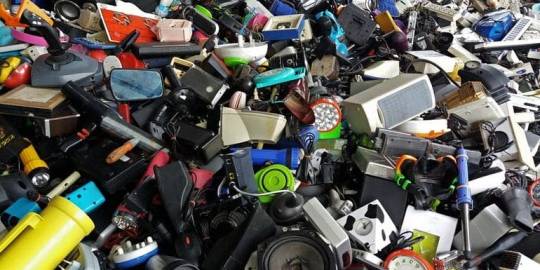
WasteMaterial: Leading the Charge in E-Waste Recycling
WasteMaterial is not just another E Waste Recycling Companies it is a pioneer in sustainable waste management solutions. Founded on the principles of environmental stewardship and technological innovation, WasteMaterial has emerged as a frontrunner in the industry, revolutionizing the way e-waste is handled and processed.
At the core of WasteMaterial’s operations is a commitment to maximizing resource recovery while minimizing environmental impact. Through state-of-the-art recycling facilities and cutting-edge technologies, WasteMaterial efficiently processes various forms of e-waste, including old computers, mobile phones, televisions, and other electronic devices.
Why Choose WasteMaterial?
Environmental Responsibility: WasteMaterial prioritizes environmental sustainability in every aspect of its operations. By recycling e-waste responsibly, WasteMaterial helps mitigate the environmental hazards associated with improper disposal, such as soil and water contamination and greenhouse gas emissions.
Advanced Recycling Technologies: WasteMaterial employs advanced recycling technologies to extract valuable materials from e-waste efficiently. Through processes like shredding, sorting, and refining, WasteMaterial can recover precious metals, plastics, and other valuable components, diverting them from landfills and reintroducing them into the production cycle.
Data Security: In an era where data privacy is paramount, WasteMaterial understands the importance of securely managing electronic devices. Whether it’s wiping sensitive data from hard drives or ensuring the safe disposal of electronic components, WasteMaterial prioritizes data security throughout the recycling process, giving clients peace of mind.
Compliance and Certifications: WasteMaterial adheres to strict regulatory standards and holds certifications that attest to its commitment to quality and compliance. By partnering with WasteMaterial, clients can rest assured that their e-waste is handled in accordance with the highest industry standards, minimizing legal and reputational risks.
The Future of E-Waste Recycling: A Circular Economy Approach
As the global demand for electronics continues to rise, the need for sustainable E Waste Recycling Companies solutions has never been more pressing. WasteMaterial recognizes that traditional linear models of consumption and disposal are no longer viable in the long term. Instead, WasteMaterial advocates for a circular economy approach, where resources are continuously recycled and reused, minimizing waste and maximizing value.
Through initiatives such as product refurbishment, component recovery, and material repurposing, WasteMaterial aims to close the loop on e-waste, creating a circular ecosystem where resources are conserved and waste is minimized. By adopting a holistic approach to E Waste Recycling Companies, WasteMaterial not only reduces the environmental footprint of electronic devices but also creates economic opportunities and fosters innovation in the recycling industry.
Join the Movement Towards Sustainable E-Waste Management
In conclusion, WasteMaterial stands at the forefront of the e-waste recycling revolution, offering comprehensive solutions that combine environmental responsibility, technological innovation, and regulatory compliance. As consumers, businesses, and governments increasingly prioritize sustainability, WasteMaterial provides a beacon of hope in the quest for a cleaner, greener future.
Together, let us embrace the challenge of E Waste Recycling Companies and pave the way for a more sustainable tomorrow. Join WasteMaterial in its mission to transform the e-waste landscape and build a world where waste is no longer seen as a problem but as a valuable resource waiting to be reclaimed.
#EWasteRecycling#SustainableTech#WasteMaterial#CircularEconomy#GreenTechnology#RecyclingInnovation#DataSecurity#EnvironmentalResponsibility#ElectronicWaste#RecyclingRevolution#SustainableFuture#TechRecycling#GreenBusiness#ResourceRecovery#EWasteManagement
0 notes
Photo
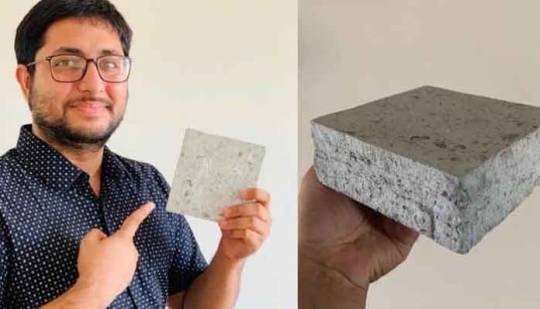
బయోమెడికల్ వేస్ట్తో.. బ్రిక్స్ తయారీ https://journalistsai.news/బయోమెడికల్-వేస్ట్తో-బ్/ #gujarat #Binish #wastematerial #Masks https://www.instagram.com/p/CD_CZFkp9GG/?igshid=1tm29eeqnw5ip
0 notes
Photo

Trying to make a shelf #wastematerial #wastematerialcraft #cartonbox #cartonboard #shelfdecor #shelflove #cutting #cuttingboard #pasting #arundhatitasteofcreation #instapost #lovecraft #artistarundhati (at Bachupally) https://www.instagram.com/p/CBYglKAH8w-/?igshid=k3zsj34cahjj
#wastematerial#wastematerialcraft#cartonbox#cartonboard#shelfdecor#shelflove#cutting#cuttingboard#pasting#arundhatitasteofcreation#instapost#lovecraft#artistarundhati
0 notes
Photo
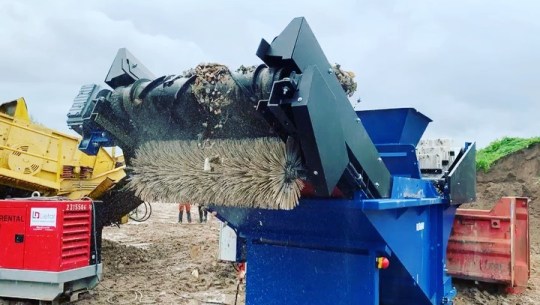
Falls Sie auch verunreinigten Bauschutt wiederverwenden wollen, dann machen Sie einfach den “Eimer-Test” 👍 Das Material das auf den Boden sinkt kann sauber von den schwimmenden Materialien, wie zB Holz, Ytong, Gasbeton, Plastik und Dämmstoffen getrennt werden. So einfsch die Methode auch ist, genauso effizient ist sie auch —> jetzt alle Informationen anschauen: www.leichtstoffsortierer.info #leichtstoffsortierer #remav #recycling #bauschutt #abbruch #wertstoffhof #wertstoff #wastemanagement #wastemanagementopen #waste #wastematerial #wastefreeplanet #wastereduction #plasticpollution #plasticrecycling #plasticrecyclingmachine #plasticwaste #containerdienst #recyclingideas #baumaterial #nichtverschwendenwiederverwenden #recyclingisourduty #remav (at Viernheim) https://www.instagram.com/p/B8nxfYpqqil/?igshid=1929r7l1t6e3o
#leichtstoffsortierer#remav#recycling#bauschutt#abbruch#wertstoffhof#wertstoff#wastemanagement#wastemanagementopen#waste#wastematerial#wastefreeplanet#wastereduction#plasticpollution#plasticrecycling#plasticrecyclingmachine#plasticwaste#containerdienst#recyclingideas#baumaterial#nichtverschwendenwiederverwenden#recyclingisourduty
0 notes
Photo

The wall of success never built in a day, it takes time to succeed. Keep performing your roll stay calm and correct. Try not to harm anybody. Follow @vinu_photographs @vinu_photographs @vinu_photographs @vinu_photographs ♠️♠️♠️♠️♠️♠️♠️♠️♠️♠️♠️♠️♠️♠️♠️♠️♠️♠️ @colours.of.india @shuttersofindia @indian_photography_club_ @incredibleindia ♣️♣️♣️♣️♣️♣️♣️♣️♣️♣️♣️♣️♣️♣️♣️♣️♣️♣️ . . . . . . #chandigarhtourism #wastematerial #statue #feelingmyself #doll #beautiful #travelblogger #photooftheday #instagram #peace #traveller #urbanphotography #nature #travelman #beauty #roadtrip #awesome #indianphotography #incredibleindia #city #rockgarden #indiaphotosociety #chandigarh #garden #rock #canon #canonphotography (at Rock Garden of Chandigarh) https://www.instagram.com/p/B7sHNh5HqsA/?igshid=1iuaxut9x3ww1
#chandigarhtourism#wastematerial#statue#feelingmyself#doll#beautiful#travelblogger#photooftheday#instagram#peace#traveller#urbanphotography#nature#travelman#beauty#roadtrip#awesome#indianphotography#incredibleindia#city#rockgarden#indiaphotosociety#chandigarh#garden#rock#canon#canonphotography
0 notes